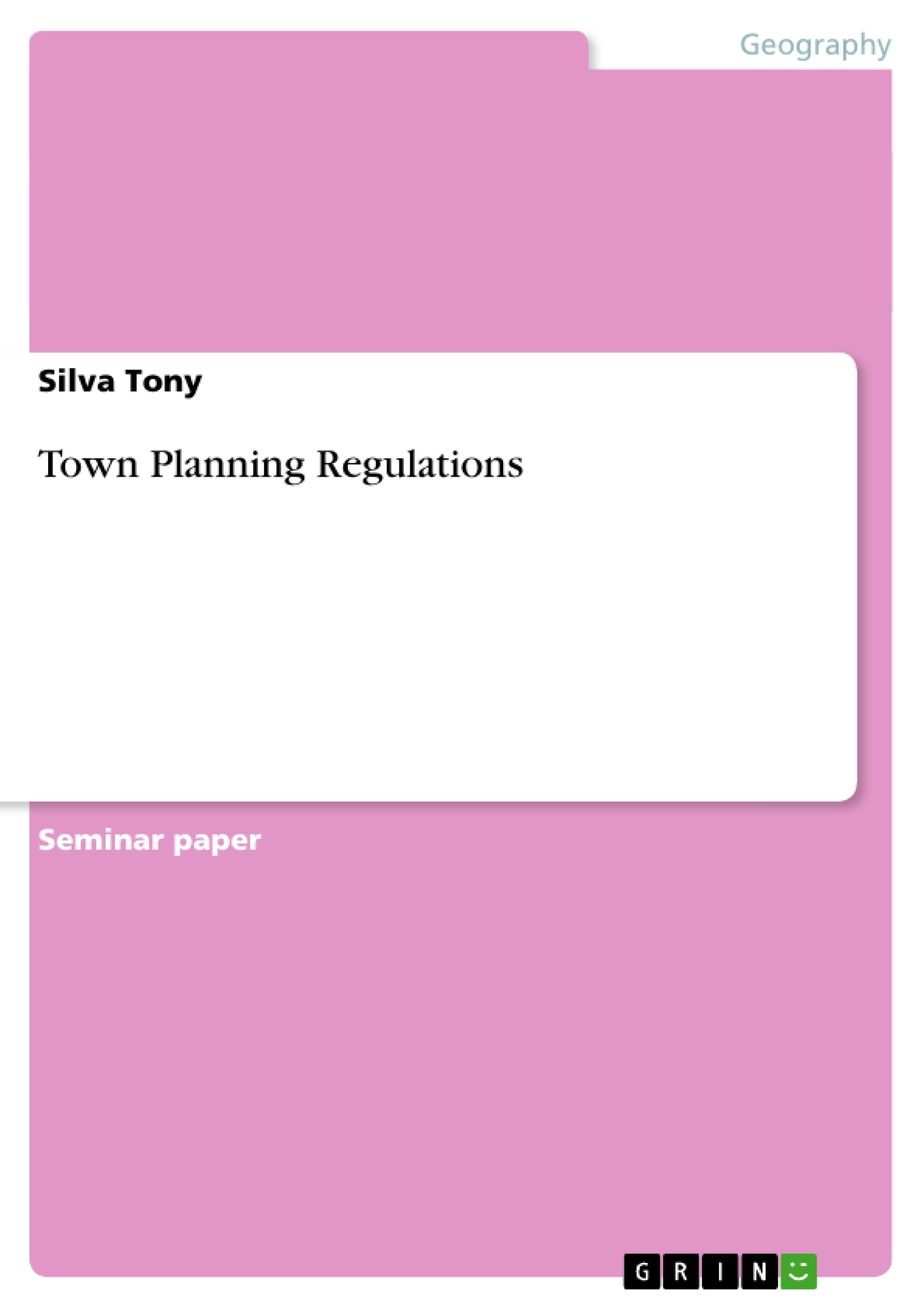In his definition, Fogg (2008) observes that town planning regulations are rules that govern land use and design of the environment, inclusive of transport networks. The aim of town planning regulations is to guide and ensure orderly development and settlement of communities within urban centres. In Australia, Queensland in particular, town planning is found in various layers that run from the site of the development to the national level (Gurran, 2011). However, the developments are guided by laid down regulations that are discussed below.
Table of Contents
1. Introduction
2. Overview of Relevant Regulations
2.1. Queensland SPA 2009
2.2. Sustainable Planning Regulation (SPR) 2009
2.3. Temporary Local Planning Instrument (TLPI).
2.4. Density Codes
2.5. Housing Codes
2.6. Height Constrictions
3. Current Use & Precinct
4. Proposed Land Use
5. Constraint Analysis
6. Heritage, Environmental, Legal, Flooding, Political, Stakeholder, Other, etc
7. Setbacks to the Acquisition and Development of the Property
8. Recommendations
9. Conclusion
References
1. Introduction
In his definition, Fogg (2008) observes that town planning regulations are rules that govern land use and design of the environment, inclusive of transport networks. The aim of town planning regulations is to guide and ensure orderly development and settlement of communities within urban centres. In Australia, Queensland in particular, town planning is found in various layers that run from the site of the development to the national level (Gurran, 2011). However, the developments are guided by laid down regulations that are discussed below.
2. Overview of Relevant Regulations
2.1. Queensland SPA 2009
One of the town planning regulations that are in force in Queensland is SPA 2009, and its periodic amendments, for example, SPOLA. The Sustainable Planning Act of 2009 is meant to seek to attain ecological sustainability through the management of the processes by which development occurs (Laverty, 2009). These includes ensuring the accountability of the process, efficiency and effectuality of the process, delivery of sustainable results, management of the consequences of development including management of premise usage, and the continued coordination and integration of planning at the local, regional and national echelons (Stiftel, Watson, & Acselrad, 2013).
2.2. Sustainable Planning Regulation (SPR) 2009
SPA 2009 is supported by the Sustainable Planning Regulation of 2009, which is a legal instrument. SPR 2009 is easier to alter and offers in-depth details on the requirements.
Although SPR 2009 can be hard to comprehend and navigate, it sets out the various step by step processes (Laverty, 2009).
2.3. Temporary Local Planning Instrument (TLPI).
Another notable regulation that is in place in Queensland is the Temporary Local Planning Instrument (TLPI). These are local government instruments that are mainly applicable in the protection of planning scheme areas from unfavorable effects. They are mainly applicable in urgent planning issues such as flooding, and were brought into being by the BCC and Ipswich Councils following 2001 floods (Thompson & Maginn, 2012).
TLPIs can only come into effect on the satisfaction of the planning Minister that there are considerable threats of severe harm occurring in the planning scheme area, setbacks involved in the amendment of the planning scheme may elevate the threat, the state’s interest is likely to be impinged on unfavorably by the anticipated TLPI and if the standard planning scheme is aptly reflected by the anticipated TLPI (Thompson & Maginn, 2012).
State Assessment and Referral Agency (SARA) is another regulatory body that was established by the Government of Queensland on 1st July, 2013. The agency is charged with the coordination and the state’s appraisal of all development requests. The agency is a regulatory body that acts as an assessment and lodgment point for all development requests for places under the state’s jurisdiction. The body also acts as the concluding decision maker so as to make sure that unrealistic demands are not forced on the applicants. Other notable town planning regulations that are in place in Queensland include the South East Queensland Regional Plan 2009–2031 State planning regulatory provisions that are legally binding requirements and are equal in status as the SPRP (Stiftel, Watson, & Acselrad, 2013).
2.4. Density Codes
The density code is another regulation that has been put in place with the aim of reviewing the material change of use and the construction work of a multi-unit/ high density residence. This code is applicable to areas that are bound to have a mixture of both houses and multi unit constructions. The purpose of the density code is to administer the effects of novel constructions on the neighboring properties. It, therefore, ensures that the construction is compatible in both design and scale to the adjacent properties, retains the pre 1946 residences model in character residential areas with the objective of maintaining the architectural themes of 1946 while also ensuring that the novel constructions offer pleasant environment for the occupants (Brisbane City Council).
[...]
- Quote paper
- Silva Tony (Author), 2013, Town Planning Regulations, Munich, GRIN Verlag, https://www.grin.com/document/270240
-

-

-

-
Upload your own papers! Earn money and win an iPhone X. -

-
Upload your own papers! Earn money and win an iPhone X. -

-
Upload your own papers! Earn money and win an iPhone X. -

-
Upload your own papers! Earn money and win an iPhone X. -

-
Upload your own papers! Earn money and win an iPhone X.

